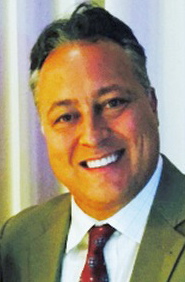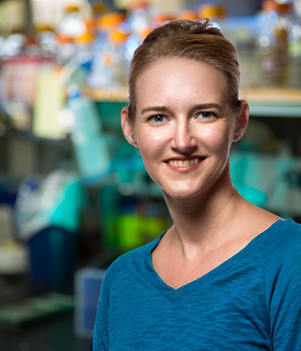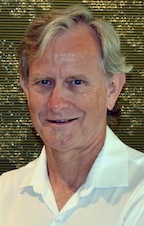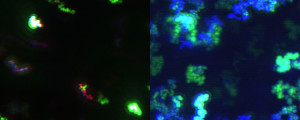Daily Business Report-July 13, 2015
With the new technology, Virgin America will become the first commercial airline to offer an in-flight WiFi service that can operate in both Ku- and Ka-band satellite networks on the same aircraft.
Virgin America to Use ViaSat Wi-Fi Technology
Virgin America will put Carlsbad-based ViaSat’s in-flight Wi-Fi technology aboard its next 10 Airbus A320 aircrafts beginning in September. ViaSat’s technology will deliver Internet speeds that are typically eight to 10 times faster than any other in-flight WiFi system — allowing travelers to experience Internet speeds similar to what they have at home. Passengers will be able to see streaming video from the Internet.
With the new technology, Virgin America will become the first commercial airline to offer an in-flight WiFi service that can operate in both Ku- and Ka-band satellite networks on the same aircraft. By deploying ViaSat’s new hybrid Ku/Ka-band antenna Virgin America can keep travelers connected virtually anywhere they fly. ViaSat’s new hybrid Ku/Ka-band antenna will enable in-flight WiFi connectivity on flights serving the airline’s new Hawaiian destinations as of 2016.
Virgin America will begin installation of ViaSat’s systems immediately — with the first Ka-band antenna equipped aircraft to take flight in the continental U.S. in September. Aircraft scheduled for Hawaii flights will be outfitted with ViaSat’s hybrid Ku/Ka-band antenna in early 2016. During the beta period rollout of the ViaSat product, Virgin America will offer free WiFi access on its first ViaSat equipped aircraft. The airline will introduce pricing for the service in 2016.
SDEA Rountable on Workplace Conflicts
Bill Eddy, president of High Conflict Institute and author of “It’s All Your Fault,” will lead a July 22 SDEA Roundtable discussion regarding high conflict personalities both within and without the workplace.
After defining and identifying high conflict traits and behaviors, he’ll offer guidance on how you can safely, successfully, and even productively interact with high conflict individuals in your workplace and throughout your life.
The program will be held from 11:30 a.m. to 1 p.m. at the SDEA Training Facility, 4180 Ruffin Road, Suite 295, San Diego. Cost is $35for SDEA members and $45 for nonmembers. Lunch is included. To register, visit www.sdeahr.org or call (858) 505-0024.

Robert Kennedy Jr. to Give Keynote Talk
at San Diego Coastkeeper Seaside Soiree
Robert F. Kennedy Jr., president of Waterkeeper Alliance, will give a keynote address at the San Diego Coastkeeper’s 18th annual Seaside Soiree on Oct. 28 at the Bali Hai on Shelter Island, celebrating the organization’s 20th anniversary.
At the Seaside Soiree, Kennedy, along with supporters, board members and staff, will celebrate the importance of San Diego’s underwater treasures and healthy waterways. The event raises money to support the organization’s work on water quality and water supply issues in San Diego County’s inland waters and along its coastline.
“San Diego Coastkeeper has grown into a movement of people across the county who are passionate about protecting our waters,” said Executive Director Megan Baehrens. “We have drastically improved the health of San Diego’s waters and protected the resources and activities that define the San Diego County way of life. Let’s celebrate that.”
Coastkeeper became the 15th Waterkeeper organization in the country in 1995. Kennedy, who was present at the organization’s launch, will revisit those early victories and look to the future of the locally based Waterkeeper model. He is one of Time magazine’s “Heroes for the Planet.
The Seaside Soiree will run from 6 to 9 p.m. General admission is $100. Visit www.sdcoastkeeper.org.
Prosecutor Who Put Mexican Street
Gang Members Behind Bars Honored

San Diego Deputy District Attorney Mark Amador was named prosecutor of the year by the California District Attorneys Association at its annual installation dinner and awards program. The award recognizes stellar work by a prosecutor.
Over the past five years, Amador has dedicated himself to the Los Palillos prosecution, a case involving 17 defendants, nine murders and 15 kidnappings by a rogue cell of the Arellano-Felix Organization. This is one of — if not the largest — murder prosecutions in the history of San Diego County.
Amador first became involved in the case during its investigation and was greatly responsible for taking action that saved the life of one of the group’s hostages, according to the association. Thereafter, he presented evidence at a two-month grand jury hearing, and prosecuted five trials, for which he spent a total of 21 actual months in trial, acting as lead prosecutor in three of them and co-chairing the other two.
The longest and most complex of the trials led by Amador was the death penalty trial of the leaders of the organization that lasted more than a year, and involved hundreds of motions, the six-week testimony of a confidential informant, testimony of reticent family members of the victims, many of whom themselves were incarcerated, strategic character attacks on Amador and allegations of misconduct.
Salk Institute Plant Biologist Named
A Rita Allen Foundation Scholar

Salk Institute plant biologist Julie Law has been named a Rita Allen Foundation Scholar, a distinction given to biomedical scientists whose research holds exceptional promise for advancing the frontiers of knowledge about how biological systems function in health and disease.
Law, an assistant professor in Salk’s Plant Molecular and Cellular Biology Laboratory and Hearst Foundation Development Chair, was one of seven scientists the Rita Allen Foundation named to its 2015 class of Rita Allen Foundation Scholars. The selected scholars will receive grants of up to $110,000 per year for a maximum of five years to conduct innovative research on brain development, antiviral immunity, gene regulation mechanisms, and the interplay of cancer, inflammation and chronic pain.
Law and the other scholars were chosen for their bold approaches to basic scientific questions that address problems of global concern, as well as their potential for learning, leadership and collaboration.
“By investing in outstanding biomedical scientists at the early stages of their careers, we are providing resources to these scholars to pioneer new approaches and discoveries,” says Elizabeth Christopherson, president and chief executive officer of the Rita Allen Foundation. “Their discoveries will help to illuminate how our brains grow and change, how our genetic materials stay intact, and how our immune systems both fend off infections and propagate pain. Researching these basic biological questions is essential to improve human health and alleviate suffering caused by cancer, chronic pain, mental illness and other maladies.”
Law’s research focuses on the complicated and cryptic realm of chromatin –the dynamic combination of proteins, small RNAs and other molecules that surround genomic DNA and play key roles in controlling its expression and stability. After an initial fascination with the myriad roles of RNAs in gene regulatory processes, Law says, “I became hooked on chromatin. And now it seems that everywhere I look there’s an important biological process with links to chromatin.”
House Passes Bill to Increase Funding
For National Institutes of Health
— Times of San Diego
Rep. Scott Peters and the California biotech industry cheered the passage of a bill in Congress that increases funding for the National Institutes of Health by nearly $9 billion over five years.
The 21st Century Cures Act passed on a bipartisan 344-77 vote and now goes to the Senate, where a vote is expected in the fall.
“I’m hopeful that today’s bipartisan bill will bring us closer to increasing the annual NIH budget so that we can stay atop the world in terms of research, development, and discovery,” Peters said after the vote.
“San Diego institutions and labs received nearly $400 million in NIH funds last year, and rely on consistent investments to complete their groundbreaking research,” he added.
Among the San Diego delegation, only Rep. Darrell Issa voted against the bill, which also includes reforms to speed up the Food and Drug Administration’s review process for new drugs and procedures. Some lawmakers criticized the bill because it included mandatory funding provisions, and others were concerned that the reforms could undermine drug safety.
However, the San Diego-based California Life Sciences Association described it as “a visionary piece of legislation critical to ensuring that California and the U.S. remains the worldwide leader in life sciences research, investment and innovation.
“Attention now turns to the Senate, and we look forward to working with Senators on their ideas and priorities for advancing biomedical research and development,” said the association, which represents more than 750 companies and organizations. “We encourage the Senate to move quickly in advancing this legislation through the chamber and to the president’s desk.”
Scripps Research Institute Awarded Grant
To Study Lupus and Rheumatoid Arthritis Triggers

Researchers from The Scripps Research Institute have received a grant of more than $1.2 million to amplify existing research into how environmental factors trigger autoimmune diseases rheumatoid arthritis and lupus. The grant is from the National Institute of Environmental Health Sciences.
According to the U.S. Centers for Disease Control and Prevention, at least 1.5 million Americans suffer from rheumatoid arthritis and 322,000 have lupus, a chronic and potentially life-threatening disease that can damage skin, joints and organs.
K. Michael Pollard, an associate professor of molecular medicine at TSRI, will lead the three-year project, which expands the scope of a currently funded $2.2 million grant from the agency. Dwight H. Kono, professor of immunology at TSRI, is a co-investigator on the project.
“We hope to have a better understanding of the mechanisms used to produce autoimmunity by different compounds,” said Pollard, who emphasized the collaborative nature of the grant. The grant, he said, will allow researchers to
bring experts from diverse fields together in a consortium and help advance understanding of environmentally induced autoimmunity.
The team, which includes experts from the University of Montana and the University of Florida, will use mouse models to investigate how repeated exposure to environmental factors, including mercury, crystalline silica (from ground-up rock) and nanoparticles, can lead to autoimmune disease.

Researchers Develop Breakthrough
Technology to Characterize Nanoparticles
Scripps Institution of Oceanography researchers have developed a new technology for studying and characterizing nanoparticles, which will be commercially available through MANTA Instruments, a new company formed through a collaboration with the Triton Technology Fund and local incubator program EvoNexus.
Understanding the properties of nanoparticles such as their size and distribution is useful for a comprehensive range of disciplines and applications, including medicine and pharmacology, environmental sciences, and various industrial sectors and consumer products such as cosmetics, inks, coatings, and food.
MANTA Instruments (for Multi-Sizing Advanced Nanoparticle Tracking Analysis) is located in the Golden Triangle area of San Diego.
“Understanding nanoparticles is important to a wide range of both scientific and commercial interests,” said Dariusz Stramski, head of the Ocean Optics Research Lab associated with Scripps’ Marine Physical Laboratory. “For example, nanoparticles suspended within the surface ocean waters can make a major contribution to the optical signal leaving the ocean, which is important to the study of the oceans from satellites. In medicine, nanoparticles are being increasingly used to deliver drugs, genes, vaccines, and diagnostics to specific cells/tissues. Having a capability to accurately measure the concentration and size of nanoparticles is of paramount importance to these and other applications.”
Council to Consider Proposal to
Meet San Diego’s ‘Zero Waste Goal’
City News Service
The San Diego City Council today will consider a proposal aimed at propelling the city’s “zero waste” goals forward.
The City Council’s proposed zero waste plan was originally adopted in December 2013 with the goal of diverting 75 percent of the waste generated in the city away from landfill disposal by 2020. “Getting to zero” means San Diego will need to reuse, recycle and reduce the amount of waste generated in the city by emphasizing education and legislation aimed at waste reduction.
The city’s goal is to reach zero waste by 2040. San Diego is now gearing up to implement new and additional programming that will help the city reach the first of their three zero waste goals by fiscal year 2020.
The Environmental Services Department was tasked to come up with new ways to reduce the amount of waste that ends up in landfills. The proposed programs aimed at waste reduction and diversion include additional organic recycling, revising city recycling ordinances and increasing recycling at city facilities and additional education and outreach, among other programs.
The proposed programs are projected to cost the city $8 million but San Diego’s Independent Budget Analyst reports that the options the Environmental Services Department came up with would cover the costs associated with the zero waste plan.
The Environmental Services Department said programs and diversions can be expanded after 2020 to reach 90 percent diversion of the city’s waste by 2035, a goal that was outlined in last year’s Climate Action Plan.
The city currently diverts 67 percent of its waste from landfills. To meet its 2020 goal, the city will need to divert an additional 332,000 tons of waste annually.
Each of the potential programs will have to be individually approved by City Council at a later date.


